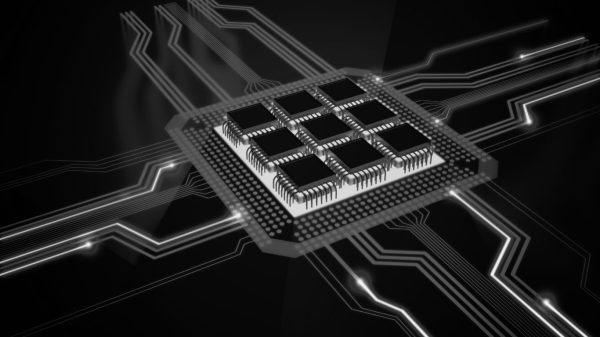As computers are the growing need of the hour, the same way network is also an essential part of it. Management of the network is vital for the proper functioning of systems. Network management is the successful administration of your company’s computer network. It informs you about the condition of your network, runs and monitors it, allowing early detection of network problems, and so on. Network management equips administrators with tools and protocols to optimize network operations. Network management aims to encompass the methods, procedures, and tools necessary to run, maintain, and administrate networks properly. Network management tools are software and hardware technologies that help network system administrators manage the corporate network more efficiently.
Get Our FREE Networking Security Checklist
Key Components of Network Management
Fault Management is the process of finding and correcting defects, as the name implies. This reduces network downtime and increases uptime. It is critical to immediately identify and resolve network faults in order to maintain the network operational. Whether it is a routing loop or a faulty post, administrators must identify and resolve the problem as soon as feasible.
Configuration management is the practice of managing and administering device settings in order to keep a network healthy and safe. It necessitates the use of a system to store settings, maintain and update them, push them to devices, and aid in network topology changes.
Performance management entails monitoring the network’s performance and ensuring that SLA performance goals are fulfilled. It is helpful in determining how much bandwidth the network is consuming. This also includes network capacity planning and tracking the trends of decreased network performance. This aids in the proactive prevention of issues.
Security management guarantees that your network and devices are secure from unauthorized access. We handle firewalls, servers, routers, and switches to aid in the prevention of security risks. Network administration aids in the management of authorization, authentication, and accounting. This takes care of defining who requires what access.
Network Management Protocol
A network management protocol is a collection of network protocols that define processes and regulations for network administration, maintenance, and monitoring on a computer network. When network protocols are run, they provide information on the condition of a host network in terms of network latency, data loss, network faults, and other pertinent data. A human network manager expert uses the network management protocol to diagnose and analyze communications between a client device and the host.
Importance of Network Management
Working with an out-of-date network management system might reduce your productivity. Regular and consistent network maintenance is the most convenient technique to test your network’s capabilities. You may be guaranteed to generate better outcomes and provide your team with the opportunity to keep ahead of any setbacks and avoid difficulties that may affect productivity levels by utilizing network administration and maintenance run by network professionals. A network management system lets you monitor the system, remain updated for viruses and other threats, be ready for any software or hardware issues, and enables easy maintenance to maintain the smooth operation of your company’s IT solutions.
Benefits of Network Management
- Virus and Malware Removal: Your network security should be geared toward repelling assaults and reducing the likelihood of future attacks. The management system should warn you and prepare you to deal with impending threats to the functionality and survival of your network’s company.
- Updates to the System: You should ensure that your network systems are constantly updated since this ensures maximum performance and saves you money on extensive repairs. When you keep your systems up to date, you place your network in a better position to combat future threats and boost productivity.
- Detection of Threats: Because of malicious external agents, your network may be vulnerable to attacks that disrupt its functionality and operation. A solid network can only identify risks such as phishing and malware; the sooner they are recognized, the easier it is to avoid harm. Staying ahead of attacks allows you to maintain a fully operational and secure network.
- Maximum Productivity: Constant network maintenance ensures efficient IT operation and provides you peace of mind that all applications are functioning correctly. How long your network operating system has been in use makes no difference. If your network is not meeting your speed, data storage, and accessibility demands, you should be concerned.
- Visibility on the network: Network management gives visibility into the various network components and allows you to track your performance since the network’s inception.
- Cost Management: With technological advancements proving to be so pricey, a network management system guarantees that all activities are carried out correctly and augments your own efforts.
- Reducing interruption: Every system experiences downtime at some point. This downtime is greatly minimized when a network management system is in place.
Get Our FREE Networking Security Checklist
Challenges of Network Management
Even in small and medium-sized enterprises, network infrastructure is complicated. The increasing quantity and variety of network devices have made supervision increasingly complex. Millions of devices, operating systems, and apps must all communicate with one another. The development of cloud computing and innovative networking technologies such as software-defined networking has exacerbated the battle to maintain control over this large environment.
Security Risks
The quantity, complexity, and complexity of network security threats have all increased dramatically. As a network evolves, it introduces additional vulnerabilities and possible sites of failure.
User Preferences
Users have gotten used to rapid response times. Users demand continual high network speed and availability due to advancements in technology and network capacity, even at home. Downtime is not tolerated well.
Cost
The administration of network infrastructure is not free. While automated technologies have made the process more accessible than ever, technological and workforce costs are considered. This cost can be increased when numerous versions of network management software are required to deploy, owing to a lack of scalability in modern business networks with tens of thousands of devices.










